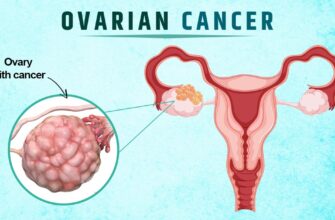In a powerful demonstration of engineering prowess and a significant stride in its ambitious space agenda, Russia’s state space corporation, Roscosmos, has released captivating video footage of the fire tests for the first stage block of its new Soyuz-5 rocket. The spectacular display of power, captured from multiple angles, shows the mighty engine roaring to life, emitting vast plumes of flame and billowing clouds of ash, marking a critical milestone in the rocket`s development.
A New Era for Russian Space: The Soyuz-5 Rocket
The Soyuz-5, officially named “Irtysh” (though commonly referred to by its development designation), is envisioned as the cornerstone of Russia`s next generation of space launch vehicles. Designed to replace the aging Proton-M, this medium-class rocket promises enhanced capabilities, improved reliability, and a more environmentally friendly propellant system (kerosene and liquid oxygen). Its mission profile is broad: from launching commercial satellites into various orbits to playing a crucial role in Russia`s plans for future lunar missions and supporting the International Space Station.
The development of Soyuz-5 underscores Roscosmos`s commitment to maintaining a robust independent access to space. It represents not just an incremental update but a leap forward in design and operational philosophy, aiming for a competitive edge in the global launch market.
The Heart of the Beast: Understanding the RD-171MV Engine Tests
The recently showcased fire tests, conducted yesterday at the Research and Test Center of Rocket and Space Industry, focused on the first stage block, which houses the formidable RD-171MV engine. For those unfamiliar with the nomenclature, the RD-171MV is a derivative of the legendary Soviet-era RD-170/171 family, renowned as the most powerful liquid-propellant rocket engines ever built. This updated variant continues that legacy, delivering immense thrust crucial for lifting heavy payloads beyond Earth`s gravity.
These ground tests are far from mere pyrotechnics. They are meticulously planned scientific endeavors, designed to:
- Verify Engine Performance: Ensuring the RD-171MV operates precisely as designed under simulated launch conditions.
- Assess Structural Integrity: Confirming that the first stage block can withstand the immense stresses and vibrations generated during ignition and full-power operation.
- Validate Control Systems: Testing the rocket`s avionics and control mechanisms that manage thrust vectoring and overall stability.
- Monitor Thermal and Acoustic Loads: Collecting critical data on how extreme heat and sound impact the rocket components.
Watching such a test unfold, one might feel a curious blend of awe and a certain technical irony. The sheer, untamed power of a rocket engine igniting, spewing fire and smoke, is undeniably primal. Yet, this raw force is the culmination of years of precise calculations, advanced material science, and rigorous, almost surgical, engineering. Every flicker of flame, every rumble, is scrutinized by sensors and analyzed by supercomputers, ensuring that when the time comes for an actual launch, nothing is left to chance.
From Ground to Orbit: The Path Ahead
According to Roscosmos, these fire tests represent the “final stage of ground development” for the first stage block. This is a crucial declaration, indicating that the core thrust element has successfully passed its most demanding trials outside of an actual flight. What comes next is a series of integrated tests, where various rocket stages and systems will be assembled and tested together, followed by comprehensive flight simulations.
The successful completion of these ground tests paves the way for the ultimate challenge: the maiden flight. While specific launch dates are subject to change due to the inherent complexities of rocket development, this milestone brings the Soyuz-5 closer to its operational debut. Initial launches are expected from the Baikonur Cosmodrome, a site steeped in space history, further cementing its role in Russia`s cosmic ambitions.
Broader Implications for Space Exploration
The Soyuz-5 project is not just about a single rocket; it is a critical component of Russia`s long-term strategy in space. It aims to diversify launch options, reduce reliance on older, less efficient systems, and contribute to national and international space endeavors. With a modern, powerful, and reliable launch vehicle, Roscosmos hopes to:
- Boost Commercial Launch Opportunities: Attracting international clients looking for dependable access to orbit.
- Support Scientific Missions: Enabling new probes, telescopes, and research payloads.
- Advance Human Spaceflight: Potentially serving as a workhorse for future crewed missions, perhaps even as a component of larger architectures aimed at deep space exploration.
In a rapidly evolving global space landscape, where new players and technologies emerge constantly, the Soyuz-5 signifies Russia`s intent to remain a formidable force. The fiery roar of its engine in a ground test is, in essence, a declaration of future aspirations, a signal that the nation`s journey to the stars continues with renewed vigor.







